 The catalog for Retro/Prospective: 25+ Years of Art Textiles and Sculpture is an ambitious venture for us. Currently weighing in at 182 pages, it features a timeline of art textile events from the 40s to the present, including the Lausanne Biennials (1962 to 1995), Fiber/Revolution in Milwaukee in 1986, Beyond Weaving in Greenwich, Connecticut in 2006, and key dates for fiber pioneers like Dorothy Liebes, Lenore Tawney, Magdalena Abakanowicz and Ed Rossbach. The catalog also includes two essays, one by designer Jo Ann Stabb, formerly on the design faculty at the University of California, Davis, on the emergence of contemporary textiles and fiber arts, the other by Lesley Millar, Professor of Textile Culture at the UK’s University of the Creative Arts, on recent developments in the field and what’s ahead. The catalog will be available in our online bookstore at http://browngrotta.com/Pages/c37.php for $55.00, plus shipping and sales tax where applicable.
The catalog for Retro/Prospective: 25+ Years of Art Textiles and Sculpture is an ambitious venture for us. Currently weighing in at 182 pages, it features a timeline of art textile events from the 40s to the present, including the Lausanne Biennials (1962 to 1995), Fiber/Revolution in Milwaukee in 1986, Beyond Weaving in Greenwich, Connecticut in 2006, and key dates for fiber pioneers like Dorothy Liebes, Lenore Tawney, Magdalena Abakanowicz and Ed Rossbach. The catalog also includes two essays, one by designer Jo Ann Stabb, formerly on the design faculty at the University of California, Davis, on the emergence of contemporary textiles and fiber arts, the other by Lesley Millar, Professor of Textile Culture at the UK’s University of the Creative Arts, on recent developments in the field and what’s ahead. The catalog will be available in our online bookstore at http://browngrotta.com/Pages/c37.php for $55.00, plus shipping and sales tax where applicable.

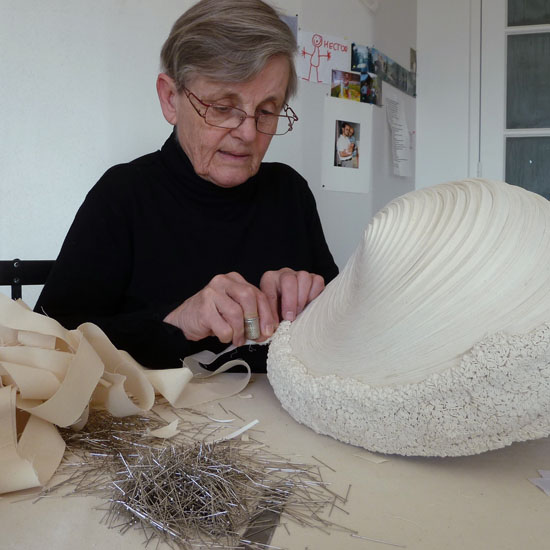
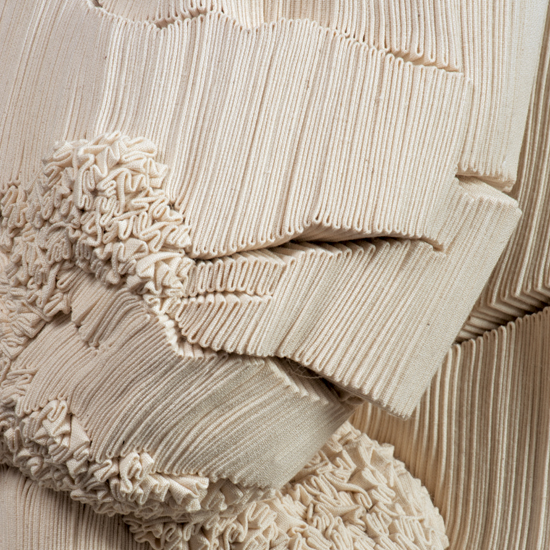


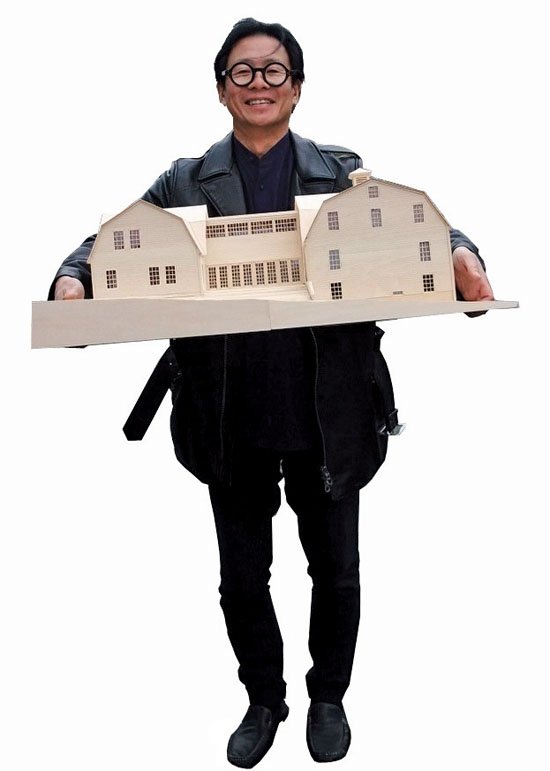

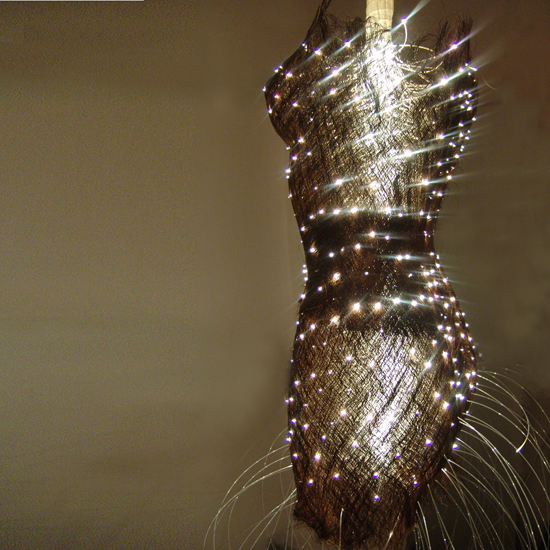
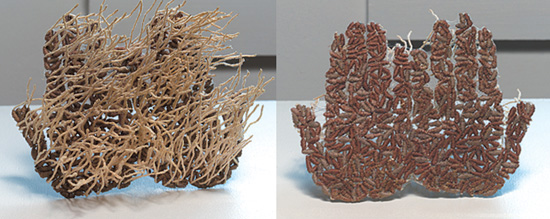
Looking Forward/Looking Back: John Perreault
Anda Klancic, Lenore Tawney, Lewis Knauss
photos by Tom Grotta
“It is, in fact, the haptic, or touchable, nature of fiber art that throws off most art critics: they are only comfortable with the optic, granting tactile values a very low position on the aesthetic totem pole. In fiber art one cannot avoid the haptic and the haptic/optic conflict or, more graciously, the haptic/optic interplay. How fiber art looks is only part of the picture.
Dani Marti, Carolina Yrarrázaval, Sherrie Smith
Thus it is awkward, to say the least, that the English language and most particularly the critical language, is haptic-poor. Poetry can sometimes make amends, but is in itself an extremely specialized discourse, prone to enthusiasm at the expense of illumination. In the past the art critical language has been applied to some rather outrageous art: Earth Art, Anti-Form, Performance, Body Art, Conceptual Art, Patterning and Decoration. From this it may be gathered that any material criterion for art has been dislodged. Futurism and Dada insisted that art could be made of anything. If a pile of dirt, in certain cases, can be art, then why not a pile of fibers? If art can be made on a printing press, then why not on a loom? If art can be made by tossing molten lead against a wall, then why not by knotting threads? If art can quote the great “crafts” traditions, why cannot present day explorations of these materials and techniques be art too?”
Marian Bijlenga, Eva Vargo, Carolina Yeonsoon
photos by tom Grotta
John Perreault
then-Visual Arts Director, The Cultural Center
Staten Island, New York
From “Fiber Art: Gathering the Strands,” Fiber r/evolution, Milwaukee Art Museum, 1986